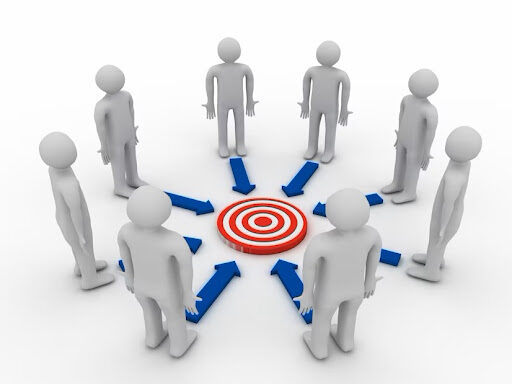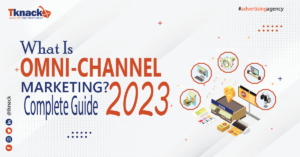Marketing Automation
The use of marketing automation has brought about a revolution in the industry in how businesses reach their target audience. To make the most of it, follow the recommended guidelines for successful implementation and optimization. This guide covers the fundamental best practices that can boost efficiency and drive growth for your business.

What is the effectiveness of marketing automation?
Marketing automation streamlines processes saves time, and personalizes communication with customers. It also provides data insights for better decision-making and improves marketing effectiveness. Businesses need to remain competitive in the digital age.
How Can Marketing Automation Help Your Business?
If you’re looking for ways to streamline and optimize your marketing processes, marketing automation could be the solution you need. Here are some of the benefits it can provide for your business:
-
More efficiency:
With marketing automation, you can let the system handle repetitive and time-consuming tasks like email sending, social media posting, and audience segmentation. This frees up your team to focus on more creative work.
-
Personalized marketing:
Automation lets you send targeted and personalized messages to your audience based on their behavior, preferences, and demographics. This can help your messages resonate more and lead to better engagement.
Lead nurturing:
Marketing automation can help move leads through the sales funnel by sending them relevant content at the right time. This can help build stronger relationships with potential customers and increase conversions.
-
Consistency:
Automation can help you deliver your marketing messages consistently across different channels and at the right times. This can help your brand look more professional and build trust with your audience.
Analytics:
Many automation tools come with analytics and reporting features that can help you track your marketing performance and make data-driven decisions.

-
Cost savings:
While there might be an initial investment, automation can save you money in the long run by streamlining your marketing efforts and reducing manual labor.
Scalability:
As your business grows, automation can scale with it and help you handle processes for a larger audience.
Lead scoring:
Automation can help you prioritize leads based on their engagement with your content, making your sales team more efficient.
-
Cross-channel marketing:
Automation lets you coordinate marketing campaigns across different channels like email, social media, and SMS, making your marketing more cohesive.
A/B testing:
With automation, you can test different elements of your marketing strategy to find what works best.

-
Customer retention:
Automation can also help retain existing customers with things like loyalty programs and follow-up surveys.
-
Lead generation:
Automation can help you capture leads from various sources, like your website or social media. If you’re looking for ways to streamline and optimize your marketing processes, marketing automation could be the solution you need. Here are some of the benefits it can provide for your business.

How to Implement Marketing Automation Best Practices for Maximum Efficiency:
In order to fully capitalize on the potential of marketing automation and circumvent common missteps, it is essential to adhere to established best practices. The following guidelines will assist in the effective implementation of marketing automation:
-
Establishing Clear Goals and Objectives:
Prior to implementing marketing automation, it is imperative to define your goals and objectives. This will guide your automation strategy, whether it pertains to lead generation, lead nurturing, increasing conversions, or improving customer retention.
Target Your Audience:
Target your audience based on demographics, behavior, and preferences. This will enable the delivery of personalized messages that are more likely to resonate with each group.

Focus on Quality Content:
The creation of high-quality, relevant, and valuable content is crucial for marketing automation. Develop content that addresses your audience’s needs and pain points at different stages of the buyer’s journey.
Maintain a Clean and Updated Database:
The efficacy of your marketing automation system is predicated on the data it employs. Regularly clean and update your contact database to ensure accuracy and relevance, and eliminate duplicates and inactive contacts.
Map Customer Journeys:
Plot out the customer journey and construct automation workflows that correspond to each stage, including onboarding sequences, lead nurturing, and post-purchase follow-ups. Tailor your content and messaging to align with each stage.
Implement Lead Scoring:
Establish a lead scoring system that prioritizes leads based on their engagement and behavior. This enables your sales team to focus their efforts on the most promising leads.
-
Conduct A/B Testing:
Continuously test various elements of your campaigns, such as subject lines, content, and CTAs, to optimize performance. A/B testing facilitates the refinement of your automation strategies over time.
Personalize Your Messages:
Utilize personalization tokens and dynamic content to enhance the personalization of your messages. Incorporate the recipient’s name, company name, and other pertinent information to create a more tailored message.
-
Follow Regulations:
Ensure that your marketing automation practices comply with applicable data protection and privacy regulations, such as GDPR or CAN-SPAM Act. Obtain consent where necessary, and provide simple options for unsubscribing.
-
Monitor and Analyze Metrics:
Monitor the performance of your automation campaigns on a regular basis. Pay attention to metrics such as open rates, click-through rates, conversion rates, and ROI. Utilize these insights to make data-driven adjustments.

-
Integrate with CRM:
Integrate your marketing automation platform with your Customer Relationship Management (CRM) system to enable a seamless flow of data between marketing and sales teams.

-
Align Sales and Marketing:
Encourage collaboration and communication between your sales and marketing teams. Both should have visibility into the automation processes and work collaboratively to convert leads into customers.
-
Provide Ongoing Training:
Ensure that your marketing team is well-versed in using the automation platform. Familiarity with the tools and best practices will maximize the system’s effectiveness.
-
Scale Gradually:
Begin with a few automated campaigns and gradually expand as you gain experience and insight.
-
Regularly Review and Update:
Marketing automation necessitates regular reviews and updates to remain current with industry trends and changes in your audience’s behavior.
Conclusion:
By adhering to these best practices, you can enhance customer engagement, achieve better outcomes for your business, and fully leverage the potential of marketing automation. It is important to remember that successful marketing automation is not solely a function of technology but is also heavily dependent on strategy, content, and continuous optimization.
Read More: How to Understand Google’s Product Taxonomy




